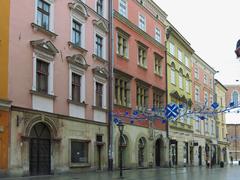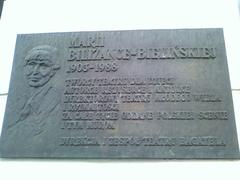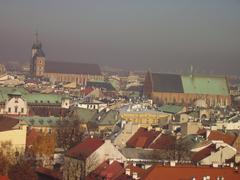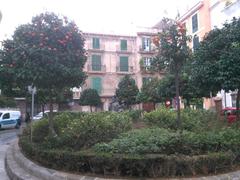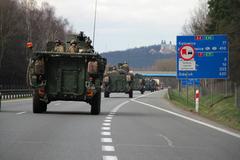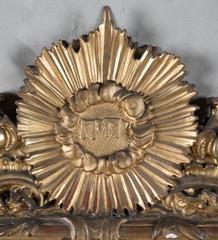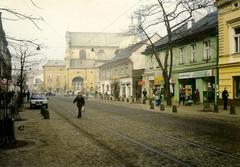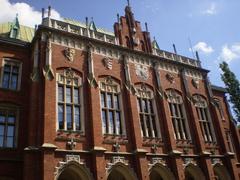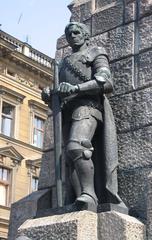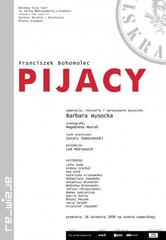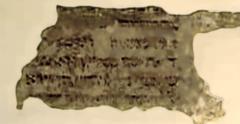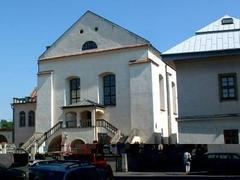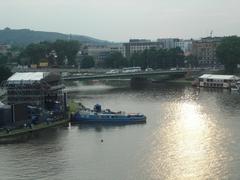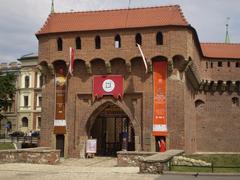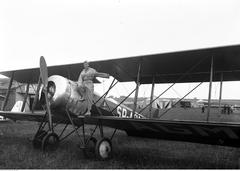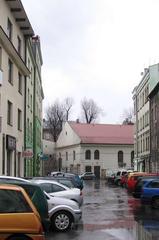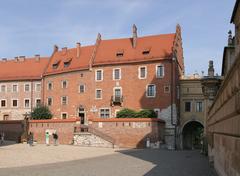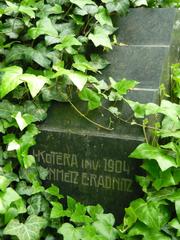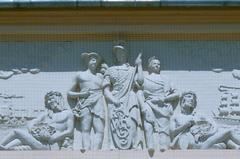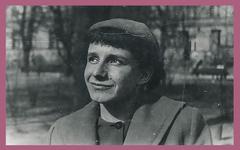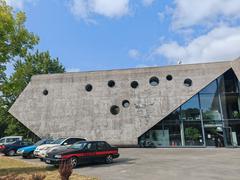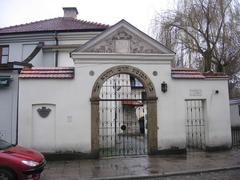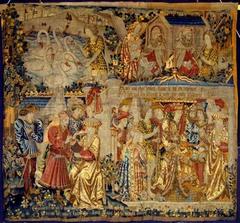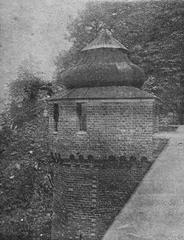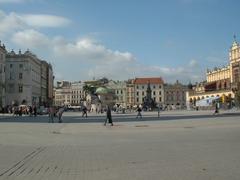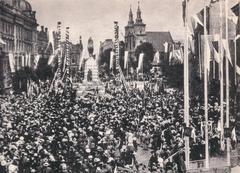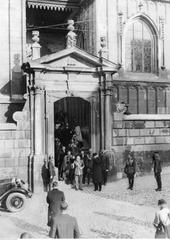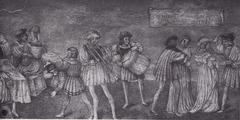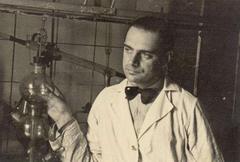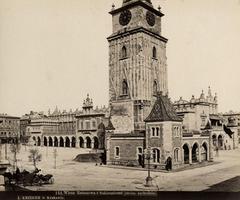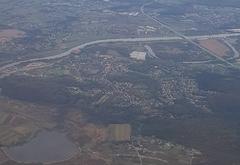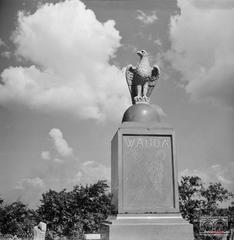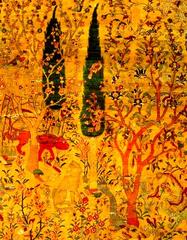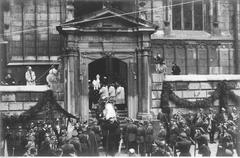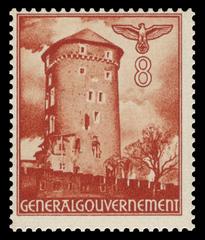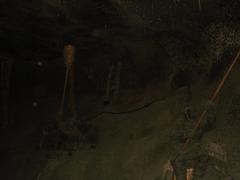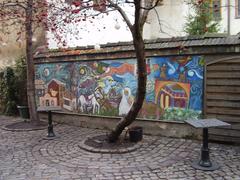Comprehensive Guide to Visiting Jana Nowaka-Jeziorańskiego Square in Kraków, Poland
Publication Date: 16/08/2024
Introduction to Jana Nowaka-Jeziorańskiego Square
Jana Nowaka-Jeziorańskiego Square, located in the heart of Kraków, Poland, is a site of immense historical and cultural significance. Named after Jan Nowak-Jeziorański, a renowned World War II resistance fighter and journalist, the square serves as both a tribute to his legacy and a focal point of Kraków’s urban life. Visitors to the square are treated to a rich tapestry of architectural styles, reflecting the city’s evolution from the 19th century to modern times. During World War II, the square was a significant site under Nazi occupation, and its post-war reconstruction symbolizes Kraków’s resilience and renewal. Today, it stands as a vibrant cultural hub, hosting numerous events and activities that draw both locals and tourists. The square’s central location makes it easily accessible, with several nearby attractions such as Wawel Castle and the Main Market Square adding to its appeal. Whether you’re a history enthusiast, a cultural explorer, or simply looking for a pleasant place to visit, Jana Nowaka-Jeziorańskiego Square offers a unique blend of historical insights and contemporary experiences (Wikipedia, Wikimedia Commons, In Your Pocket Guide).
Table of Contents
- Introduction
- Historical Background
- Visiting Hours and Tickets
- Travel Tips
- Cultural Significance
- Key Historical Events
- Architectural Highlights
- Commemorative Elements
- Accessibility and Amenities
- Future Prospects
- FAQ
- Conclusion
Historical Background
Origins and Naming
Jana Nowaka-Jeziorańskiego Square is named after Jan Nowak-Jeziorański, a prominent figure in Polish history. Jan Nowak-Jeziorański was a World War II resistance fighter, journalist, and later, a director of the Polish section of Radio Free Europe. His contributions to Polish independence and his efforts in promoting democratic values are commemorated through this square.
Architectural Evolution
The square has undergone various transformations over the years, reflecting the architectural and urban development trends of Kraków. Initially, the area was part of the broader urban expansion during the late 19th and early 20th centuries. The architectural style of the buildings surrounding the square ranges from neoclassical to modernist, showcasing the city’s evolving aesthetic preferences.
Role During World War II
During World War II, Kraków was under Nazi occupation, and the city’s urban spaces, including Jana Nowaka-Jeziorańskiego Square, were repurposed for the occupiers’ administrative and military needs. The square witnessed significant historical events, including public gatherings and military parades orchestrated by the Nazi regime. The impact of the war on the square and its surroundings is a poignant reminder of Kraków’s turbulent history.
Post-War Reconstruction and Modernization
After the war, Kraków, like many other European cities, embarked on a path of reconstruction and modernization. Jana Nowaka-Jeziorańskiego Square was revitalized as part of these efforts. The post-war period saw the introduction of new architectural elements and urban planning concepts aimed at restoring the city’s historical charm while accommodating modern needs.
Visiting Hours and Tickets
Jana Nowaka-Jeziorańskiego Square is open to the public 24/7. There are no entry fees, making it an accessible destination for everyone. However, some guided tours and special events may require tickets, which can be purchased online or at nearby tourist information centers.
Travel Tips
Getting There
The square is easily accessible via public transportation, with several tram and bus lines serving the area. For those driving, there are nearby parking facilities.
Nearby Attractions
Jana Nowaka-Jeziorańskiego Square is conveniently located near other notable landmarks such as Wawel Castle, the Main Market Square, and the Cloth Hall. Visitors can easily plan a full day of sightseeing around the square.
Best Times to Visit
The square is vibrant year-round, but it is particularly lively during cultural festivals and public holidays. For a more relaxed experience, consider visiting during weekdays or early mornings.
Cultural Significance
Jana Nowaka-Jeziorańskiego Square holds a special place in Kraków’s cultural landscape. It serves as a venue for various cultural events, public gatherings, and commemorations. The square’s design and layout facilitate its use as a communal space where residents and visitors can engage in cultural and social activities. The presence of statues, plaques, and other commemorative elements further enhances its cultural significance.
Key Historical Events
Several key historical events have taken place at Jana Nowaka-Jeziorańskiego Square, each contributing to its rich narrative. These events include:
- World War II Occupation: The square was a focal point during the Nazi occupation, witnessing numerous military parades and public gatherings.
- Post-War Reconstruction: The square played a crucial role in Kraków’s post-war reconstruction efforts, symbolizing the city’s resilience and renewal.
- Cultural Celebrations: Over the years, the square has hosted numerous cultural celebrations, including festivals, concerts, and public commemorations.
Architectural Highlights
The architectural highlights of Jana Nowaka-Jeziorańskiego Square include a mix of historical and modern elements. Notable buildings and structures around the square showcase various architectural styles, from neoclassical facades to contemporary designs. These architectural features provide a visual narrative of Kraków’s architectural evolution and urban development.
Commemorative Elements
The square is adorned with several commemorative elements that pay tribute to Jan Nowak-Jeziorański and other significant figures in Polish history. These elements include statues, plaques, and memorials that provide historical context and honor the contributions of these individuals to Poland’s national identity.
Accessibility and Amenities
Jana Nowaka-Jeziorańskiego Square is pedestrian-friendly, with well-maintained pathways and ample seating areas. Visitors can find a range of amenities, including cafes, restaurants, and shops, making it a convenient and enjoyable destination.
Future Prospects
Looking ahead, Jana Nowaka-Jeziorańskiego Square is poised to continue its role as a central cultural and historical hub in Kraków. Ongoing preservation efforts, coupled with initiatives to enhance its cultural offerings, will ensure that the square remains a vibrant and significant part of the city’s urban landscape.
FAQ
What are the visiting hours?
The square is open to the public 24/7.
Do I need tickets to visit?
There are no entry fees, but some guided tours and special events may require tickets.
How can I get there?
The square is accessible via several tram and bus lines. There are also nearby parking facilities for those driving.
Are there any nearby attractions?
Yes, the square is close to Wawel Castle, the Main Market Square, and the Cloth Hall.
Conclusion
Jana Nowaka-Jeziorańskiego Square is a vibrant urban space that reflects Kraków’s rich historical and cultural heritage. Whether you’re a history buff, a cultural enthusiast, or simply looking for a pleasant place to visit, this square offers a blend of historical insights and contemporary urban experiences. Plan your visit today and immerse yourself in the unique atmosphere of Kraków’s iconic landmark.
References and Further Reading
- Wikipedia, 2024, Jan Nowak-Jeziorański source url
- Wikimedia Commons, 2024, Jana Nowaka-Jeziorańskiego Square in Kraków source url
- In Your Pocket Guide, 2024, Plac Jana Nowaka-Jeziorańskiego source url
- New Eastern Europe, 2018, Traces of Memory: Jewish Museum Galicja, Kraków source url
- Full Suitcase Travel Tips, 2024, Kraków Travel Tips source url
- Kraków Culture, 2024, HistoryLand source url
